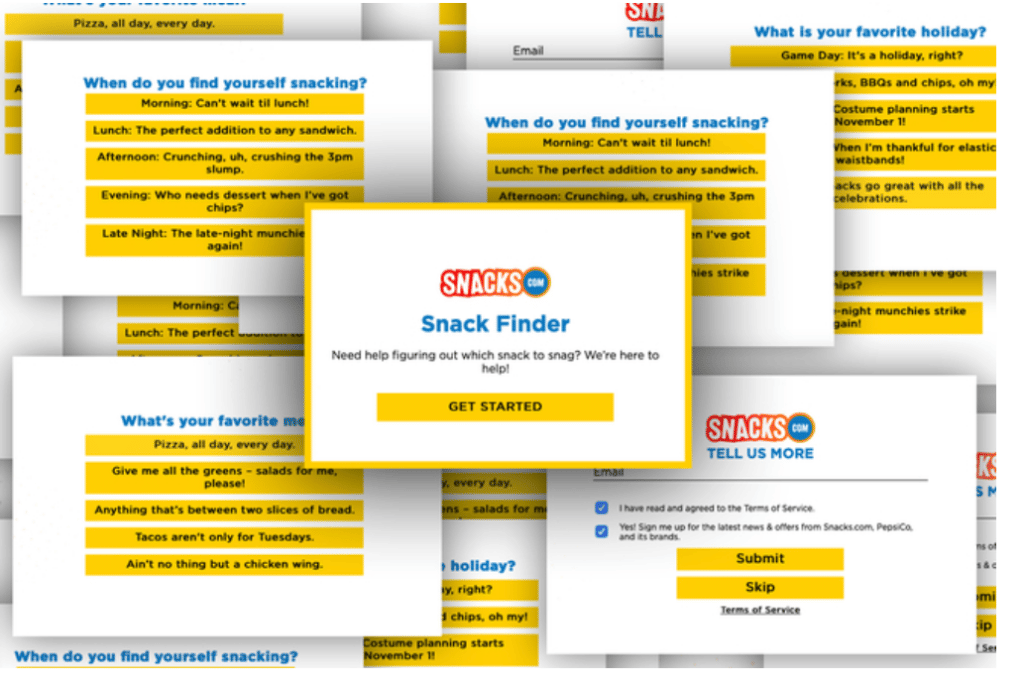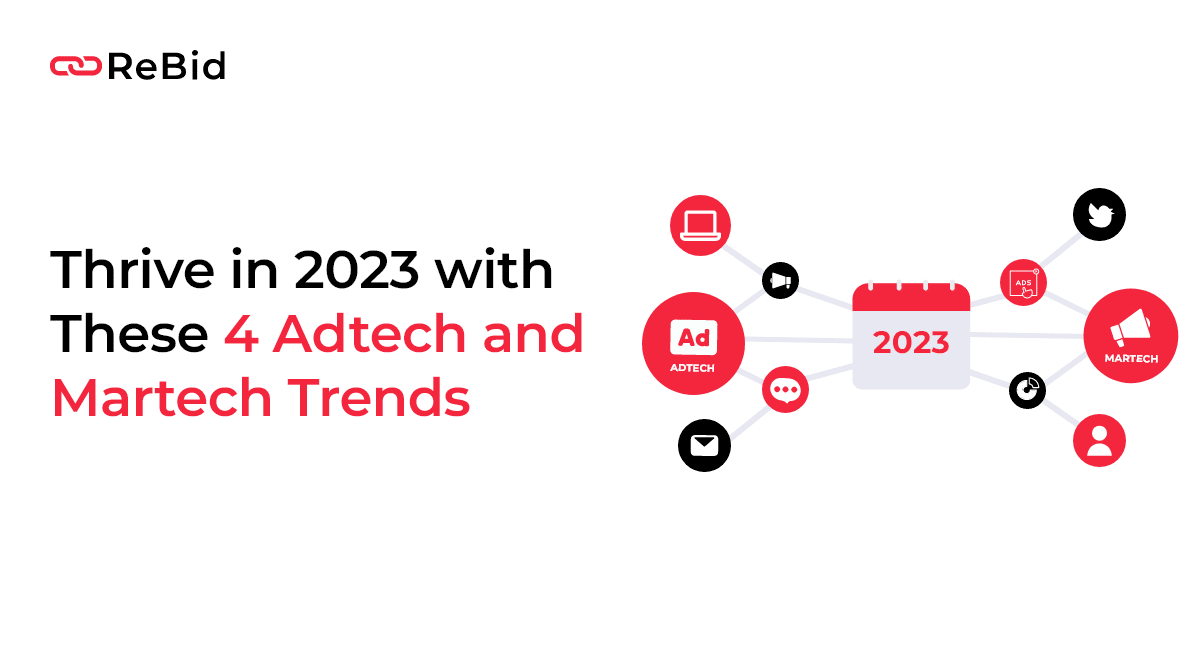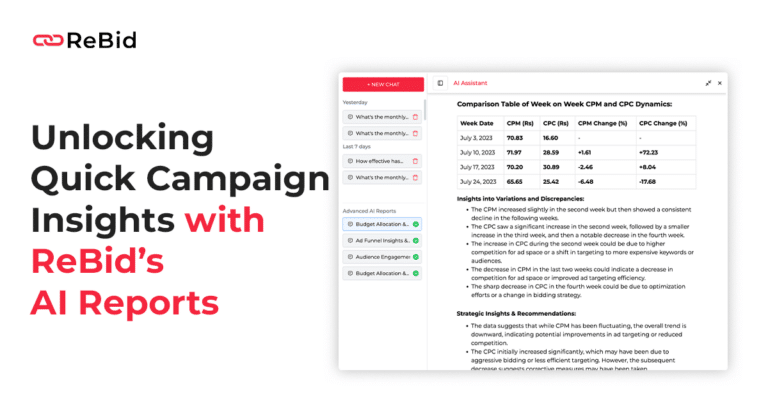2023 promises to be a year of great flux and change in the marketing ecosystem. It’s the year of an economic downturn promising to get worse. It is also the last year of third-party cookie-based targeting, and marketers’ hunt for new solutions will reach its peak. It will be the year when marketers will have to do more with less – more personalization, fewer ad budgets, and more questions on ROAS specifically and marketing ROI in general. There are key Martech and Adtech trends to look out for in 2023.
Brands and agencies can consider this time a constraint or opportunity. With tightening ad budgets, brands will rethink their strategies, from data collection to advertising execution. This means marketers will focus on hyper-personalized advertising while betting big on technology and platforms that generate high returns. Adtech and Martech will influence much of this. Read on to learn how
2023 Martech and Adtech trends to watch
2023 advertising trends and 2023 marketing trends will be a lot about MADTech (Adtech + Martech) coming to life to make things simpler, more cost-effective, and more data-obsessed.
Trend 1: Zero-party data will rule the roost
One of the biggest 2023 Martech and Adtech trends will be marketers leaning on zero-party data. With cookie demise and the need to keep customer relationships transparent and ethical, zero-party data collection techniques will continue to evolve.
Several brands have already adopted cookieless data collection methods. But this shift will be massive in the coming year as 90% of marketers plan to capture consented zero-party data within the next twelve months.
Cookie deprecation is one of many factors driving zero-party data adoption. As a high-impact, consented data source, it serves an essential purpose during an economic downturn: hyper-personalized ads for the most high-intent customers to boost ROAS.
Surveys, pop-up questionnaires, and conversation bots will form a big part of 2023 advertising trends. A great example is Pepsico, which used a brilliant “Snack Finder” quiz on its food website, snacks.com, to understand customers’ snacking habits and preferences.

The goal was to keep customers engaged while delivering a personalized shopping experience and also increasing sales. Using the data from the quiz, Pepsico was able to double its conversion rates.
Trend 2: New AI ML use cases in advertising and marketing
95% of companies already use AI to place personalized ad creatives and target individual customers on a large scale at low costs. One of the best AI ML use cases in advertising and marketing is Starbucks. Its initiative, DeepBrew, uses AI to deliver a more immersive customer experience. Out of many things, the platform tracks customers’ purchase data to deliver personalized ads, leading to a 15% year-over-year growth in memberships.
Next year’s tight budgets leave little room for advertising experiments and trial & error. As a result, brands, marketers, and agencies will employ AI and ML to do more than just personalization.
Predictive analytics through AI, for instance, will gain ground in 2023. AI will enable the marketing ecosystem to predict ad campaign outcomes before launch, saving time, resources, and money. It also means that companies will deliver the exact ads customers want to see, building a positive brand image that consumers will trust.
We have already built for this. ReBid Buy’s AI-based CTR Predictor, predicts the outcome of your campaigns, i.e., expected CTR, clicks, and impressions across different platforms. It delivers 360-degree predictive and prescriptive insights. The end-to-end ML engine then applies best practices and techniques to provide high advertising outcomes in a real-time environment.
Though AI predictive analysis has been around for a while, 2023 will see more brands and marketers adopting it to insure their ad executions. Conversations about predictive analytics have increased by 20% since January 2022, and most agree that AI analysis is the future.
Trend 3: CTV advertising will gain ground, as will FAST channels
CTV advertising has been growing as viewership shifts from Cable to Connected TV. But 2023 Martech and Adtech trends will see CTV advertising in a new light with the demise of cookies. Even services like Netflix, which previously distinguished themselves as “no ads” platforms, plan on releasing cheaper ad-supported tiers.
CTV and OTT advertising investments are expected to rise 14.4% in 2023, even as other marketing budgets drop. This is primarily because of CTV’s personalization capabilities, even without third-party cookies. CTV ads target customers based on behaviours, preferences, and location. These ads are also unskippable, which means higher ad completion rates and ROAS. With the additional capability of household targeting, like the good old days of TV advertising, CTV will be a hot space among advertisers.
CTV, too, is heading towards a transformation with FAST (Free Ad-Supported TV) channels boosting advertising and revenue models and customer appeal, perhaps forever. CTV subscriptions were initially appealing because of the endless choice. However, the flexibility also meant too many out-of-budget subscriptions in every household. More and more customers are reaching the peak of subscription fatigue and will demand cheaper services. They will be willing to watch ads if that means lower entertainment expenses during an economic downturn.
FAST channels eliminate the burden of choice and subscription with ad-supported, on-demand linear TV experience. They will see customers flock to CTV for its connected experience and, yet, linear TV-like pricing. As viewers shift to FAST channels, 2023 Martech and Adtech trends will see the FAST channel market reaching $4 billion in the US alone. FAST lowers the entry barrier to CTV customers, opening up a whole new world for advertisers to hyper-personalize ads at scale to a significantly large audience. FAST will offer the best .of both worlds to viewers and advertisers, making CTV ad budgets ROI-insured.
The immersed and engaged viewership like linear TV + unskippable ads + cookieless personalization + programmatic capabilities = what’s not to love? And ReBid Desk, our programmatic DSP supports in-housing with integration across multiple channels and formats including CTV ads. The user-friendly platform empowers you to be tactical in your approach for customizing bids across multiple channels, audience targeting (through our own inbuilt DMP + access to global third-party data vendors), strategic budget allocations, overall campaign strategies, pacing, etc along with AI-based predictors & recommendations.
ReBid Desk is made to scale your reach and make you more pertinent in your CTV target audiences’ lives in the moments that matter most.
Trend 4: SSP-DSP and DSP-DMP hybrids will become the norm
SSP, DSP, and DMP have been around as standalone platforms helping marketers reach their target audience at scale. But with the evolution in technology, marketing, and MADTech, DSPs and DMPs can do more by working together. As a result, hybrid platforms that serve as SSP-DSPs and DSP-DMPs will be one of the significant 2023 Martech and Adtech trends emerging next year.
DSPs are pushing their boundaries, acquiring roles traditionally done by SSPs. For example, TradeDesk, a well-known DSP, is looking to integrate directly with publishers, which falls in the SSP domain. Similarly, SSPs also work with media companies to acquire ad spaces, practically eliminating ad exchanges.
Similarly, data management platforms (DMPs) are also integrating with DSPs to target ads better. DMPs will help demand-side platforms to invest only in those ad spaces that show promising returns. The DMP-DSP hybrid will enable better customer data organization, meaningful customer segmentation, and actionable customer insights to power truly data-driven advertising.
As marketers look for more one-stop solutions, DSPs, SSPs, and DMPs will work together as one unit to create ad campaigns with higher ROAS. ReBid has built for this, too – our platform powers targeting precision in three ways. First, the in-built DMP on our DSP – ReBid Desk – leverages millions of omnichannel data profiles from global consumers across campaigns. This serves as your first-party data to streamline retargeting. Second, ReBid Desk is also integrated with the data marketplaces of premium identity solution providers like Liveramp. This further strengthens holistic audience creation and management. Finally, most importantly, our customized CDP – ReBid Insights – takes care of the deeper nuances of a data-driven advertising model, even in the post-cookie landscape.
Prepare for the ad and marketing transformation of 2023 with ReBid
2023 will be all about personalization, ethical data, and targeted ROI-insured advertising. It’ll be about doing more with less. And at ReBid, we are ready for precisely this. We were born to make it happen – read more about it here.
ReBid is a data-obsessed, far-sighted platform in tune with 2023 Martech and Adtech trends.
We predict campaign outcomes to insure your ad budgets. We make data collection and consolidation simpler. We are AI-driven, CTV-ready, and hybrid-oriented for cost-effective, highly impactful advertising interventions. All with a single goal: boosting your ROAS by 30%, if not more.
ReBid is prepared for 2023. Are you? Book a demo and get started.





